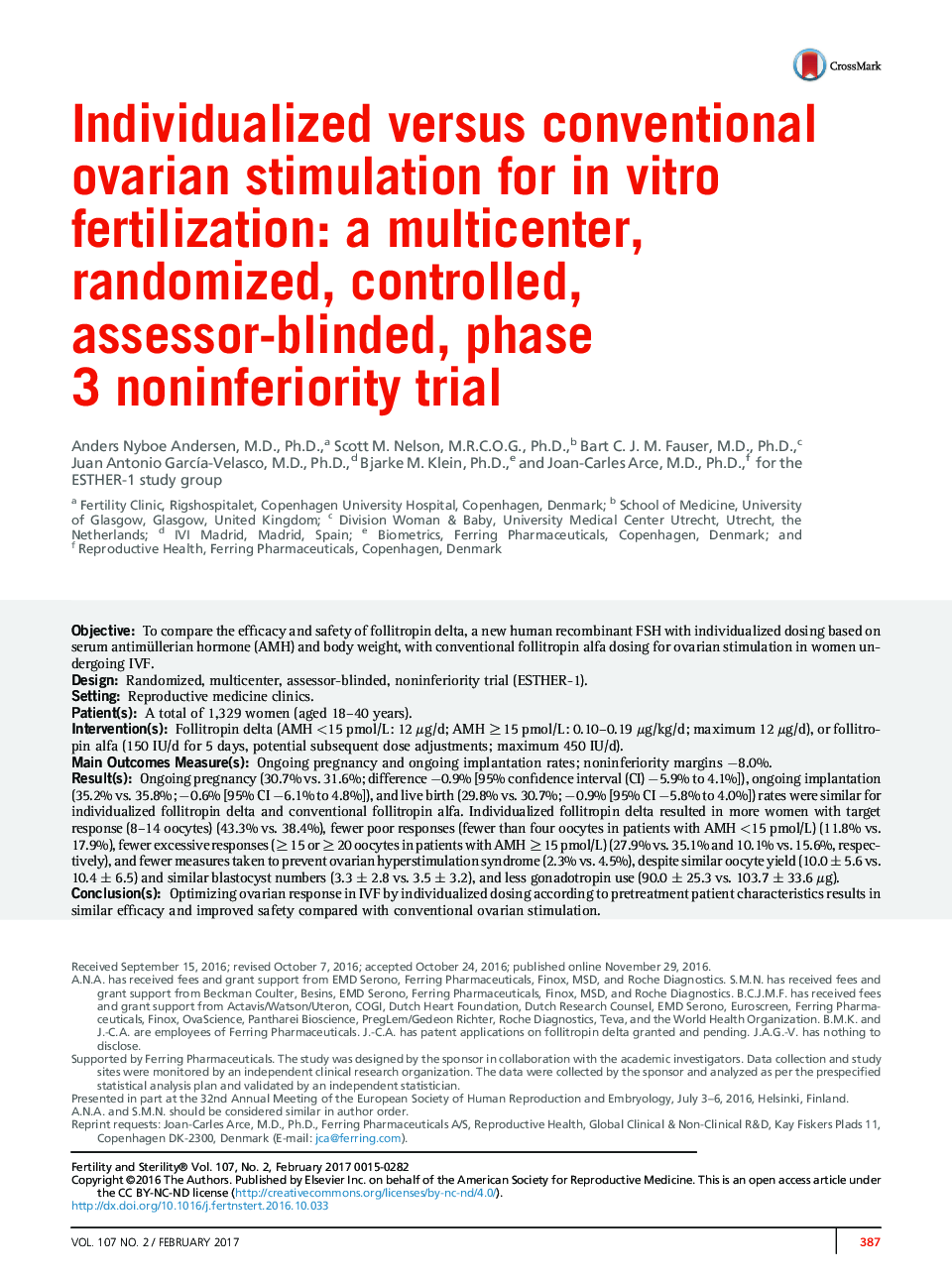| کد مقاله | کد نشریه | سال انتشار | مقاله انگلیسی | نسخه تمام متن |
|---|---|---|---|---|
| 5694976 | 1410205 | 2017 | 14 صفحه PDF | دانلود رایگان |

ObjectiveTo compare the efficacy and safety of follitropin delta, a new human recombinant FSH with individualized dosing based on serum antimüllerian hormone (AMH) and body weight, with conventional follitropin alfa dosing for ovarian stimulation in women undergoing IVF.DesignRandomized, multicenter, assessor-blinded, noninferiority trial (ESTHER-1).SettingReproductive medicine clinics.Patient(s)A total of 1,329 women (aged 18-40 years).Intervention(s)Follitropin delta (AMH <15 pmol/L: 12 μg/d; AMH â¥15 pmol/L: 0.10-0.19 μg/kg/d; maximum 12 μg/d), or follitropin alfa (150 IU/d for 5 days, potential subsequent dose adjustments; maximum 450 IU/d).Main Outcomes Measure(s)Ongoing pregnancy and ongoing implantation rates; noninferiority margins â8.0%.Result(s)Ongoing pregnancy (30.7% vs. 31.6%; difference â0.9% [95% confidence interval (CI) â5.9% to 4.1%]), ongoing implantation (35.2% vs. 35.8%; â0.6% [95% CI â6.1% to 4.8%]), and live birth (29.8% vs. 30.7%; â0.9% [95% CI â5.8% to 4.0%]) rates were similar for individualized follitropin delta and conventional follitropin alfa. Individualized follitropin delta resulted in more women with target response (8-14 oocytes) (43.3% vs. 38.4%), fewer poor responses (fewer than four oocytes in patients with AMH <15 pmol/L) (11.8% vs. 17.9%), fewer excessive responses (â¥15 or â¥20 oocytes in patients with AMH â¥15 pmol/L) (27.9% vs. 35.1% and 10.1% vs. 15.6%, respectively), and fewer measures taken to prevent ovarian hyperstimulation syndrome (2.3% vs. 4.5%), despite similar oocyte yield (10.0 ± 5.6 vs. 10.4 ± 6.5) and similar blastocyst numbers (3.3 ± 2.8 vs. 3.5 ± 3.2), and less gonadotropin use (90.0 ± 25.3 vs. 103.7 ± 33.6 μg).Conclusion(s)Optimizing ovarian response in IVF by individualized dosing according to pretreatment patient characteristics results in similar efficacy and improved safety compared with conventional ovarian stimulation.Clinical Trial Registration NumberNCT01956110.
Journal: Fertility and Sterility - Volume 107, Issue 2, February 2017, Pages 387-396.e4